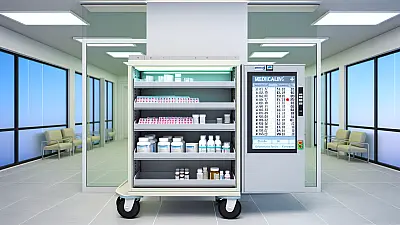GLENWOOD, MN - State inspectors found that Glenwood Village Care Center failed to properly implement and communicate fall prevention measures for a resident, leaving staff unaware of critical safety protocols designed to prevent future incidents.

Care Plan Communication Breakdown
The inspection revealed a significant breakdown in communication regarding fall prevention measures for Resident 15 (R15). After a fall incident, facility staff implemented a new safety intervention requiring that a non-mechanical lift device be removed from the resident's bathroom after each use. However, this critical safety measure was not added to the resident's official care plan, leaving multiple staff members unaware of the new protocol.
During the May 21st inspection, investigators observed the lift device stored in R15's bathroom at 7:16 a.m., directly violating the intervention that had been put in place. When questioned, a nursing assistant (NA-E) who had assisted the resident to bed the previous evening stated she "was unaware the non mechanical lift was not supposed to be stored in R15's bathroom." The assistant had placed the device back in the bathroom after helping the resident, unknowingly creating a potential safety hazard.
Multiple Staff Members Uninformed
The communication failure extended beyond a single staff member. A trained medical aide (TMA-A) told inspectors they were "not aware the non mechanical lift was to be removed from R15's room after staff assisted R15." Even more concerning, the clinical manager indicated she "was not aware of the new intervention for R15" and confirmed "it was not updated in R15's care plan."
This pattern of uninformed staff highlights a systemic failure in the facility's communication processes. When safety interventions are implemented but not properly documented or communicated, they become ineffective and can potentially increase rather than decrease safety risks.
Medical Significance of Fall Prevention Protocols
Fall prevention in nursing homes requires coordinated, facility-wide protocols because falls represent one of the most serious risks to elderly residents. When residents experience falls, facilities must immediately assess contributing factors and implement targeted interventions to prevent recurrence. These interventions only work when every staff member who interacts with the resident understands and follows the new safety measures.
Non-mechanical lift devices, when left improperly positioned, can create obstacles that increase fall risk rather than reduce it. The intervention requiring removal of the lift from R15's bathroom after use was likely designed to eliminate this hazard while ensuring the device remained available when needed for safe transfers.
Proper fall prevention requires that interventions be documented in the resident's care plan and communicated to all relevant staff members. Without this documentation, safety measures become unreliable and inconsistent, potentially putting residents at continued risk.
Policy Requirements Not Met
According to the facility's own Fall Prevention and Management policy dated December 10, 2024, staff nurses must assess all factors contributing to fall events and "recommend interventions and changes to plan of care to prevent repeat fall." The policy specifically requires staff to "communicate and document results" and complete follow-up documentation in the medical record.
The inspection findings indicate the facility failed to follow its own established protocols. While an intervention was implemented, it was not properly documented in the care plan or effectively communicated to staff, violating the facility's written policy requirements.
Industry standards require that all care plan changes be documented and communicated to ensure continuity of care across all shifts and staff members. This documentation serves as the primary means of ensuring that safety interventions are consistently implemented.
Administrative Response and Corrections
When confronted with the findings, the director of nursing acknowledged the deficiencies and confirmed that new interventions "should have been added to R15's care plan." The director stated that facility expectations require any new intervention to be "added to the care plan and staff were to follow it."
Following the inspection, facility management took corrective action. The clinical manager reported that "R15's care plan had been updated to reflect the fall intervention and the non mechanical lift had been moved out of R15's bathroom."
Additional Issues Identified
The inspection documented that the facility's fall prevention communication system failed at multiple levels, affecting nursing assistants, trained medical aides, and clinical management staff. The violation was classified as having "minimal harm or potential for actual harm" and affecting "few" residents, suggesting the issue was contained to this specific case rather than representing a facility-wide pattern.
The regulatory citation under F 0689 indicates this violation relates to care plan development and implementation requirements under federal nursing home regulations. The timing of the correction - implemented the same day as the inspection - suggests the facility was able to quickly address the immediate safety concerns once the deficiency was identified.
Full Inspection Report
The details above represent a summary of key findings. View the complete inspection report for Glenwood Village Care Center from 2025-05-21 including all violations, facility responses, and corrective action plans.
💬 Join the Discussion
Comments are moderated. Please keep discussions respectful and relevant to nursing home care quality.